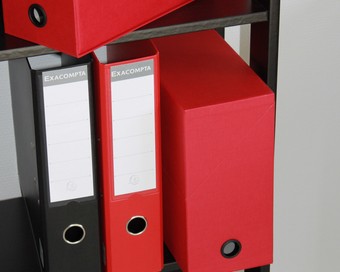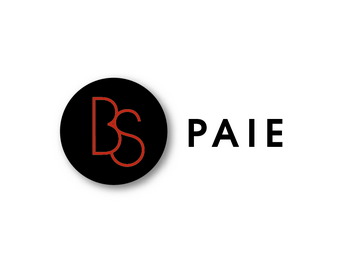jan 22 2025
Uncollectible legal definition of uncollectible
Occasionally, a previously written-off account may be recovered, requiring a reversal. Reversing a write-off involves reinstating the accounts receivable and recognizing the recovered amount as income. Common methods include the percentage of sales, aging of accounts receivable, historical data, industry standards, and customer what is sg&a guide to selling general andadministrative expenses credit ratings. Estimating uncollectible accounts is essential for maintaining accurate financial records and ensuring transparency. Various methods can be employed to predict the amount of uncollectible accounts, each with its own advantages and limitations.
Accurate financial reporting is essential for businesses, and managing uncollectible accounts, or bad debts, is a key component. If not managed properly, these accounts can negatively affect a company’s financial health. Companies need effective strategies to address potential losses and ensure financial statements reflect economic conditions accurately.
Methods for Estimating Uncollectible Accounts
They can distort the true financial health of the business and lead to inaccurate reporting. An uncollectible account is a debt owed to a business but unlikely to be paid by the debtor for any kind of reasons. Accounting for uncollectible accounts aims to accurately reflect the value of accounts receivable on a company’s balance sheet. The aging of accounts receivable method categorizes receivables by age, offering a detailed view of outstanding debts. By breaking down receivables into categories like 0-30 days, days, etc., businesses apply varying default percentages to each bracket.
Uncollectible Account
For instance, a company with a diverse customer base might prefer the aging method, which categorizes receivables by how long they’ve been outstanding for a more detailed analysis of potential defaults. This reduces the allowance for doubtful accounts by the amount of the uncollectible account and reduces the accounts receivable balance by the same amount. Legal considerations for uncollectible accounts are crucial for ensuring compliance and minimizing risks. After a few months, XYZ Corp determines that the invoice is uncollectible and decides to write off the account as a bad debt.
Account
- These accounts arise when customers fail to pay for goods or services rendered, leading to financial losses for the business.
- Companies must track and report these reversals to maintain financial statement integrity and provide stakeholders with a comprehensive view of financial performance.
- Fancy Foot Store declares bankruptcy and it is uncertain if they will be able to pay the $1 million.
- Premature write-offs can distort financial statements, while delayed action may inflate assets.
- Barry and Sons Boot Makers would record revenues of $5 million and accounts receivable of $5 million.
These accounts arise when customers fail to pay for goods or services rendered, leading to financial losses for the business. In the context of company dissolutions, addressing uncollectible accounts is crucial as it impacts the final financial statements and the overall winding-down process. Properly what is double entry accounting and bookkeeping managing these accounts helps in reducing liabilities and ensuring a smoother closure. In such cases, it’s essential for companies to account for bad debts properly, which can help them manage their cash flow and maintain accurate financial records.
This process assesses non-payment likelihood based on factors like customer payment histories, economic conditions, and industry-specific risks. It is vital for maintaining financial statement integrity and anticipating potential losses. Uncollectible accounts refer to debts that a company is unable to collect from its customers or clients.
- The data shows people who exhibit that type of behavior are much more likely to eventually have their debts written off as uncollectible, Shellenberger said.
- However, not all customers will pay their bills in full, and some may not pay at all.
- Let’s say Barry and Sons Boot Makers sold $5 million worth of boots to many customers.
- Accounts uncollectible can provide a significant amount of insight into a company’s lending practices and its customers.
- Writing off uncollectible accounts affects the balance sheet and income statement.
- Let’s say that a company called XYZ Corp provides consulting services to a customer on credit, with payment due within 30 days of the invoice date.
Alternative searches for uncollectible:
An increase in recovered accounts may enhance the accounts receivable turnover ratio, signaling improved collection efficiency. It can also positively impact profitability ratios, like return on assets, by increasing net income. Companies must track and report these reversals to maintain financial statement integrity and provide stakeholders with a comprehensive view of financial performance.
Uncollectible Accounts
The invoice was $5,000, and XYZ Corp estimates that 10% of its accounts receivable will be uncollectible. This method benefits companies with diverse customer bases or fluctuating payment behaviors. By assigning risk profiles to different aging categories, firms can tailor credit management strategies, such as implementing stricter credit terms for accounts consistently in older categories. The problem is to determine when a debt is realistically dead, which means there must be some evidence of uncollectibility or a lengthy passage of time. A debt due for services rendered is not a bad debt for tax purposes, since there is just no income on which to be taxed. Accounts uncollectible can provide a significant amount of insight into a company’s lending practices and its customers.
Uncollectible accounts can overstate revenue and assets while understating expenses, leading to inaccurate financial reporting. Effectively managing uncollectible accounts is essential for maintaining financial stability and ensuring accurate reporting. Implementing strategic measures can help mitigate the impact of these accounts on your business.
The timing and frequency of write-offs can influence financial metrics and ratios. A sudden increase in write-offs might raise concerns about credit risk management and impact liquidity ratios, like the current or quick ratio. Managing write-off policies carefully ensures transparency and reliability in financial reporting. The aging method aligns with GAAP and IFRS principles, providing a systematic way to estimate and record allowances for doubtful accounts. It can also integrate into broader financial metrics, like the accounts receivable turnover ratio, offering insights into credit and collection efficiency. Companies may choose techniques like the percentage of sales method or the aging of accounts receivable method based on their specific needs.
For bookkeeping, it will write off the amount with journal entries as a debit to allowance for doubtful accounts and credit to accounts receivable. When it is confirmed that the company will not receive payment, this will be reflected in the income statement with the amount not collected as bad debt expense. The bad debt expense included uncollectible accounts from customers who had defaulted on their credit card balances, as well as from suppliers who were owed money by the company. The allowance for doubtful accounts was increased to $629 million to reflect the estimated amount of uncollectible accounts at the end of the period.
Understanding Accounts Uncollectible
However, not all customers will pay their bills in full, and some may not pay at all. To account for this risk, companies must estimate the amount of uncollectible accounts and record them as an expense in the same period the sale was made. Estimating uncollectible accounts involves analyzing historical data, industry insights, and adhering to accounting standards. Companies use past experiences and trends to predict future uncollectible amounts.
Hospitals and other health care organizations often write off bills deemed uncollectible, but they also sell the debt to collection agencies at a huge discount, often about 1 cent on the dollar. Fancy Foot Store declares bankruptcy and it is uncertain if they will be able to pay the $1 million. Barry and Sons Boot Makers shows $5 million in accounts receivable but now also $1 million in allowance for doubtful accounts, which would be $4 million in net how to calculate estimated taxes accounts receivable. Understanding the distinction between ‘Uncollectible Accounts’ and ‘Bad Debts’ is vital for accurate financial management. All content on this website, including dictionary, thesaurus, literature, geography, and other reference data is for informational purposes only.
This reduces the accounts receivable balance by the amount of the uncollectible account and records the expense of the bad debt. Uncollectible accounts are debts that a company cannot collect from its customers, leading to financial losses. They are crucial to address during company dissolutions to ensure accurate financial statements.

































